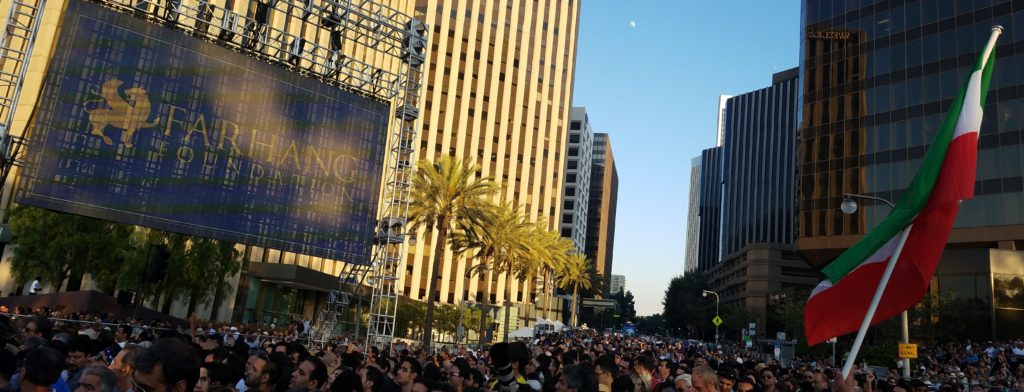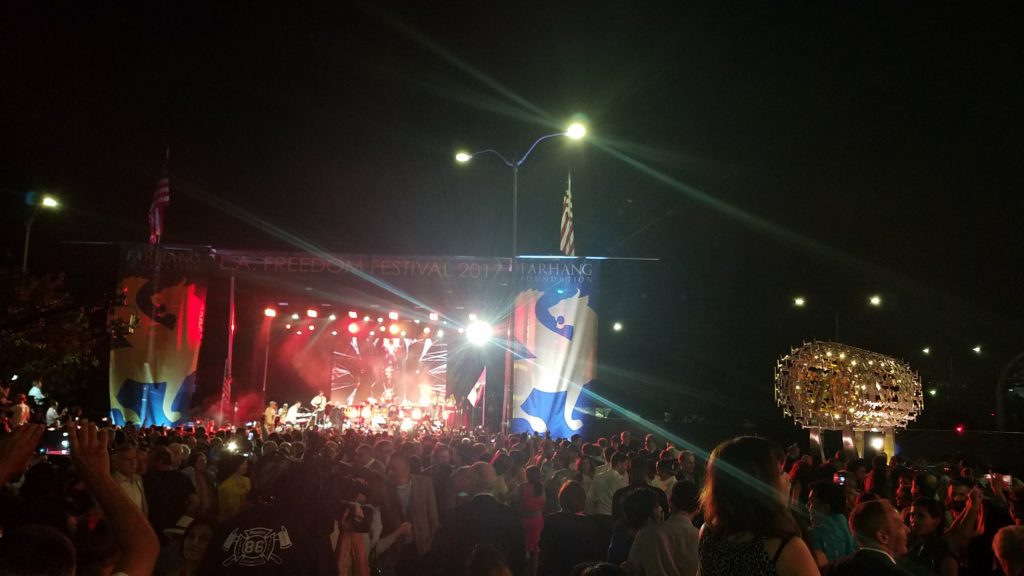I can only imagine the pure terror in the hearts of any conservatives who came upon Century Park East last night. Huge crowds of dark-skinned people swarmed around a central stage and a giant veiled object. What could all those Middle Easterners be so excited about? What was it — a totem of their barbaric religion? A bomb? Some maniacal combination of the two?
It was none of those things, but in fact a symbol of the common roots of Iranian and American identity. And it was given a name that any red-blooded American can get behind: the Freedom Sculpture.

Commissioned by the Iranian-American philanthropic group the Farhang Foundation, the sculpture was designed by British artist Cecil Balmond and given a permanent installation in the heart of Los Angeles. It’s modeled after the Cyrus Cylinder, an ancient document in which the Persian Achaemenid emperor Cyrus the Great declared that he would preserve the various freedoms of the peoples he had conquered, rather than brutally subjugate them to an authoritarian rule in which their native cultures would be wiped out by his invading forces.
While many today characterize the Cyrus Cylinder, created in 539 B.C., as the first universal declaration of human rights, some see it as little more than a piece of propaganda aggrandizing Cyrus’s rule and disparaging the idea of dissent. In any case, the principles he enumerated — freedom of religion, racial equality, and so on — were inspirational to the founding fathers of the United States of America.
I went to see the Cyrus Cylinder on display at the Freer-Sackler museum in Washington, D.C. in 2013. Next to it, the curators had placed a journal of Thomas Jefferson’s, open to a set of pages in which he had taken notes on the contents of the cylinder before writing the Declaration of Independence. The message behind the choice to show these two documents side-by-side was clear: Iranians and Americans share a common heritage and a common love for the idea of freedom.
The underlying message of the Freedom Sculpture, for which $2.5 million was crowdfunded by over one million contributors, is exactly the same. Farhang calls the sculpture “a crowd-supported public monument honoring the shared humanitarian ideals of Cyrus the Great and the Founding Fathers of America.” When it was finally unveiled, everyone present cheered to see a huge statue of interlocking gold and silver geometric patterns made to celebrate the shared values of multiculturalism, equality, and freedom.
None of this would be necessary, of course, if the United States government weren’t more or less hellbent on bombing Iran to hell. The idea of 70,000 Iranian-Americans gathered to celebrate their heritage and their country of residence shouldn’t be disturbing to anyone; it’s a beautiful thing, and it’s one less reason to view Iranians as a threat, one more reason to view them as what they are: human beings with a rich cultural history and a wealth to give to this country and the world.












